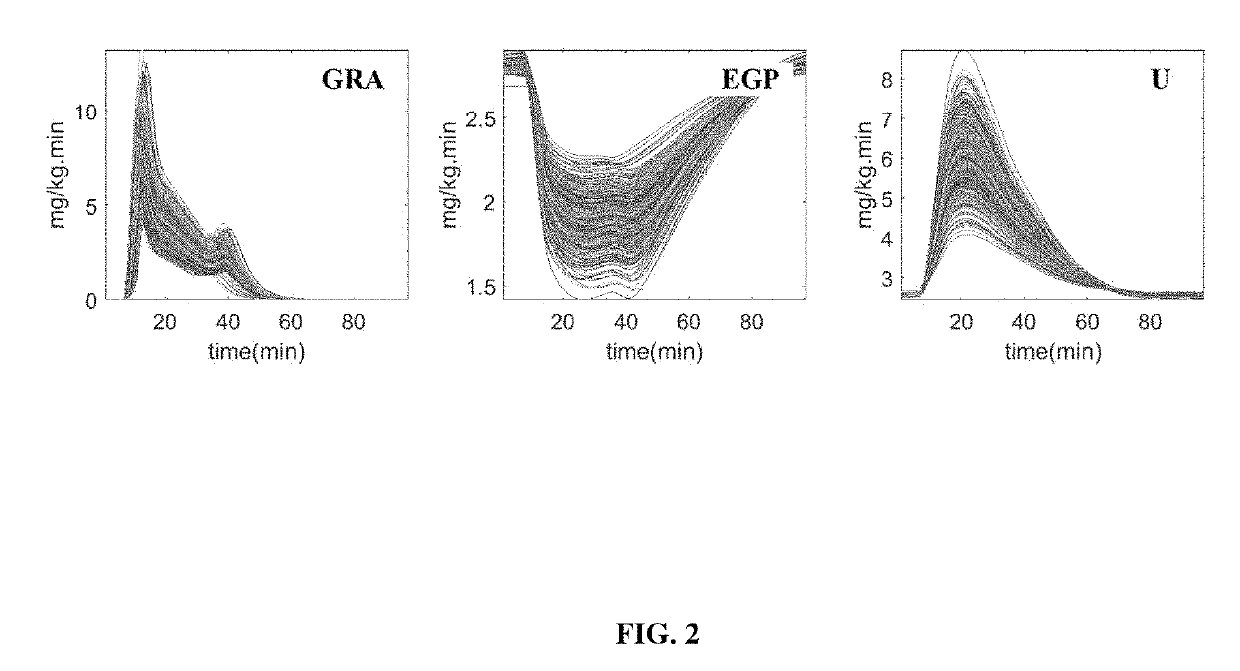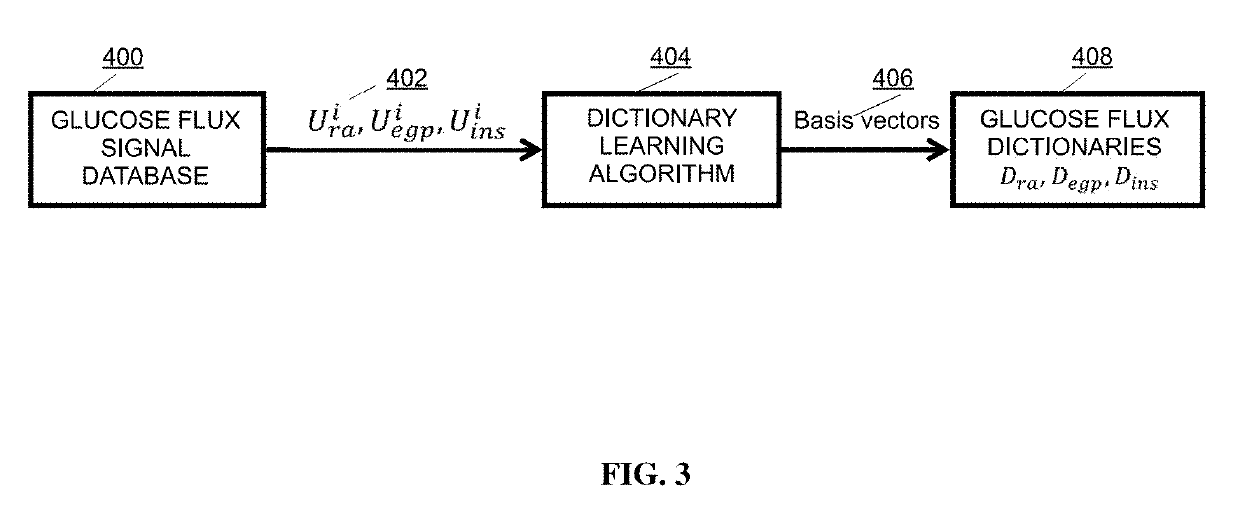Estimation of glucose rate of appearance, endogenous glucose production and insulin dependent glucose utilization from continuous glucose sensors and subcutaneous insulin deliver
a technology of endogenous glucose production and insulin dependent glucose utilization, applied in the field of medical systems, can solve the problems of high cost, invasiveness, and substantial errors of measurement protocols, and achieve the effect of relatively fast estimation results and good recovery results
- Summary
- Abstract
- Description
- Claims
- Application Information
AI Technical Summary
Benefits of technology
Problems solved by technology
Method used
Image
Examples
experiment ii
[0094] Meal Tolerance Test Conditions with Glucose Subsystem Model Only
[0095]In this simulation experiment, three simulation trials are conducted using the UVa / Padova simulator similar to experiment 1 explained above but with imperfect knowledge of patient parameters k1, k2, vg and τ while using the glucose subsystem model given in (1) only. In this case, additional information is needed in the form of estimates ccir, ūegp(0), and error bounds εcir and εegp as described earlier. In addition, a dictionary that sparsely encodes plausible flux profiles for EGP is also needed as described earlier.
[0096]In this simulation experiment, three sets of continuous time system matrices Ac, Bc, Cc (one for each patient) were then formed using patient parameters given in Table 1 and the formulation given in (25). The continuous system matrices were then discretized using zero order hold approximation with Ts=5 min to obtained matrices A, B and C needed to construct the discrete time system (9) fo...
PUM
 Login to View More
Login to View More Abstract
Description
Claims
Application Information
 Login to View More
Login to View More - R&D
- Intellectual Property
- Life Sciences
- Materials
- Tech Scout
- Unparalleled Data Quality
- Higher Quality Content
- 60% Fewer Hallucinations
Browse by: Latest US Patents, China's latest patents, Technical Efficacy Thesaurus, Application Domain, Technology Topic, Popular Technical Reports.
© 2025 PatSnap. All rights reserved.Legal|Privacy policy|Modern Slavery Act Transparency Statement|Sitemap|About US| Contact US: help@patsnap.com



